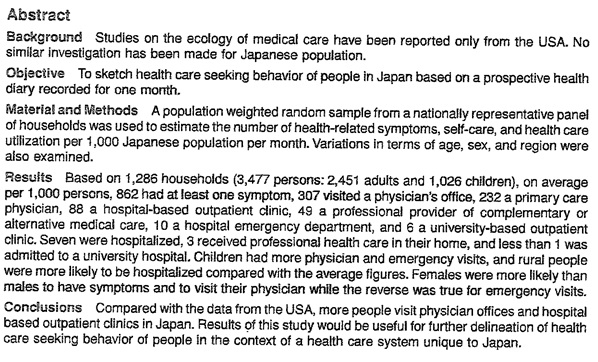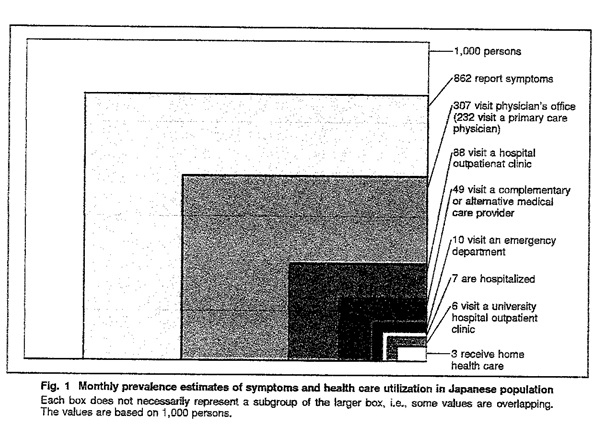- 文献名 -
John. W Saultz. Chapter 3. Access to Care. In Textbook of Family Medicine. McGraw-Hill. 1999.
- 要約 -
Definition of “Access to care”: “The ability to obtain health services when needed” (Bodenheimer TS etal. Understanding Health Policy. East Norwalk, CT: Appleton & Lange, 1995).
Of the five principles of family medicine, access to care has been associated most strongly with positive health outcomes.
Access to care is not the same thing as access to health; Access to medical care is a less powerful determinant of population health than sanitation, nutrition, and socioeconomic class.
Evidence that access to care is an important determinant of health is extensive and can be classified as follows.
1. Access to certain types of preventive services is associated unequivocally with decreased morbidity and mortality(ex. immunizations, prenatal care).
2. Access to care that allows management of certain chronic medical conditions prolongs life and minimizes complications (ex. hypertension, diabetes).
3. Access to primary care has been shown to decrease hospitalization rate and probably decreases overall health care costs(Casanova C, Starfield B. Int J Health Sev 25:283-294,1995. Bindman AB et al. JAMA 274:305-311, 1995.).
4. Substantial data establish that access to care is an important determinant of patient satisfaction with care.
【Access to Acute Care】
The ability of the patient or family to obtain access to the physician or physician’s office staff by telephone has become an important quality-of-care measure in Amerian medicine.
【Access to Preventive Care】
In U.S., the HMO is holding family physicians accountable for preventive services of habitants. The HMO believes that its expectations are reasonable, since it is paying family physicians a monthly capitation fee to assume this responsibility. A system of EHR will make it easier to monitor which patients have and have not received a particular preventive service or set of preventive services.
【Access to Chronic Care】
Family physicians believe that frequent visits with chronically ill patients improve doctor/patient compliance and facilitate a more rich and complex relationship between the patient, physician, and family.
【Access to Specialty and Hospital Care】
Highly technical and specialized care can harm patients as well as help them. Thus, assuring and managing access to specialty care has become a central part of family practice.
【Managing Underaccess to Care】
1.Overcoming Financial Barriers
inancial barriers to access in a given practice can best be overcome by specifically discussing these issues, establishing a written policy for the practice, and communicating and enforcing the policy in a caring and humane manner.
2. Overcoming Geographic Barriers
Telecommunications technology can be used to extend the physician’s service range( ex. Psychiatrist see patients with this technology in Rebun island,)
3. Overcoming Cultural Barriers
Family physician should evaluate the language needs of the practice and should establish a plan to care for patients when language barriers are present. The practice should also evaluate the cultural and religious needs of the community as an important step to assure access to care.
4. Overcoming Family Barriers
Decisions are often made by family health decision makers. Family physicians should include an assessment of this process in all formal family assessments and should also assess family health decision making for patients with chronic illness.
5. Overcoming Health System Barriers
If it is difficult for patients to access care on weekdays during the day, then family physicians should open their offices in the evenings and on weekends.
6. Overcoming Educational Barriers
The protocol for scheduling routine appointments, obtaining prescription refills, or getting health advice by telephone should also be provided to patients in writing when they enroll in the practice and reinforced periodically.
Overaccess to care
Overuse of care happens when there is a mismatch between illness and illness behavior.
開催日:2012年1月25日

